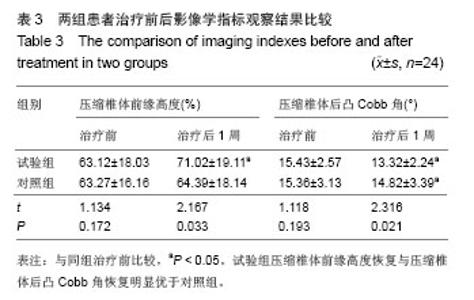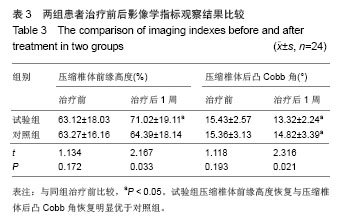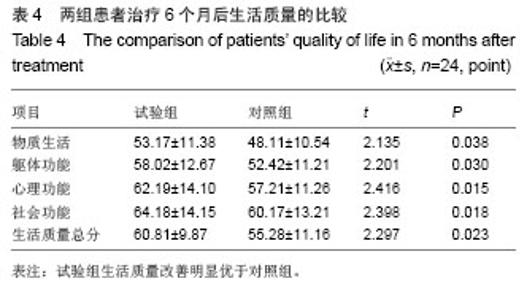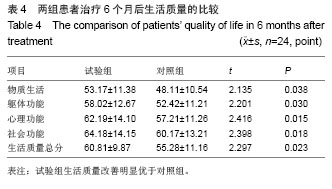| [1]赵志刚,勘武生,李鹏.经皮椎体成形术治疗新鲜骨质疏松性椎体压缩性骨折[J].中华创伤骨科杂志,2014,16(3):218-221.
[2]Al-Nakshabandi NA.Percutaneous vertebroplasty complications.Ann Saudi Med. 2011;31(3):294-297.
[3]杜曼•吐鲁木汗,祖帕尔•苏来曼,塔扎别克.后凸成形与椎体成形治疗骨质疏松性椎体压缩骨折的Meta分析[J].中国组织工程研究, 2014,18(13):2089-2095.
[4]靳丹,余进伟,封琳,等.经皮椎体成形术治疗老年骨质疏松性胸腰椎压缩骨折130例[J].山东医药,2013,53(35):69-70.
[5]方秀统,于方,付胜良,等.经皮椎体后凸成形术治疗老年人骨质疏松性脊柱压缩骨折的疗效分析[J].中华医学杂志, 2013,93(33): 2654-2658.
[6]Tanigawa N,Kariya S,Komemushi A,et al.Added value of percutaneous vertebroplasty: effects on respiratory function. AJR Am J Roentgenol.2012;198(1):51-54.
[7]荆兴泉,杨双石.经皮椎体成形和经皮椎体后凸成形术治疗胸腰椎骨质疏松性压缩骨折疗效比较[J].山东医药,2013,53(25): 81-83.
[8]Yang SC,Chen HS,Kao YH,et al.Percutaneous vertebroplasty for symptomatic osteoporotic vertebral compression fracture adjacent to lumbar instrumented circumferential fusion. Orthopedics.2012;35(7):e1079-1085.
[9]陈巧聪,楼慧玲,鹏程.中老年人骨密度变化及骨质疏松症患病率分析[J].广东医学,2011,32(5):620-622.
[10]高义斌,高丽辉.椎体成形术治疗骨质疏松性椎体压缩骨折的疗效观察[J].当代医学,2013,19(10):5-6.
[11]Kim YY,Rhyu KW.Recompression of vertebral body after balloon kyphoplasty for osteopemtic vertebral compression fracture.Eur Spine J.2010;19(11):1907-1912.
[12]张东洋,尹宏,钱卫庆.椎体成形术中影响手术椎体生物力学的相关因素研究进展[J].现代中西医结合杂志,2013,22(10):1138-1140.
[13]蔡树鹏.椎体成形术(PVP、PKP)的治疗体会[J].国际医药卫生导报,2013,19(5):685-687.
[14]张军,左春光,王新虎,等.PKP治疗不同时期骨质疏松椎体压缩骨折的结果比较[J].实用骨科学杂志,2013,19(3):196-201.
[15]郑长军,杨立强,刘钦毅,等.经皮椎体成形术治疗老年新鲜骨质疏松性压缩骨折12例[J].中国老年学杂志,2012,32(16): 3531-3532.
[16]刘炳智,李艳宝,刘振武,等.经皮椎体后凸注入骨水泥成形修复老年急性重度骨质疏松性压缩骨折62例[J].中国组织工程研究, 2012,16(29):5493-5496.
[17]杨丰建,林伟龙,朱炯,等.经皮椎体成形术和经皮椎体后凸成形术治疗骨质疏松性椎体压缩骨折[J].中国脊柱脊髓杂志, 2011, 21(1): 50-54.
[18]王智运,尹庆水,章凯,等.经皮椎体成形术后再发骨折的临床研究[J].中国骨与关节损伤杂志,2011,26(1):14-16.
[19]Chen B, Li Y,Xie D,et al.Comparison of unipedicular and bipedicular kyphoplasty on the stiffness and biomechanical balance of compression fractured vertebrae.Eur Spine J. 2011; 20(8):1272-1280.
[20]申勇,刘法敬,张英泽,等.单、双侧经皮椎体晤凸成形术治疗骨质疏松性椎体压缩骨折的疗效[J].中国脊柱脊髓杂志,2011,21(3): 202-206.
[21]杨炎,王根林,杨惠林,等.单侧与双侧椎体后凸成形术治疗骨质疏松性椎体压缩骨折[J].中国脊柱脊髓杂志,2011,21(6):480-484.
[22]唐海,陈浩,王炳强,等.椎体后凸成形术治疗重度骨质疏松性椎体压缩骨折[J].中华骨科杂志,2010,30(10):978-983.
[23]Yang XM,Wu TL,Xu HG,et al.Modified unilateral transpedicular percutaneous vertebroplasty for treatment of osteoporotic vertebral compression fractures.Orthop Surg. 2011;3(4):247-252.
[24]Kim DJ,Kim TW,Park KH,et al.The proper volume and distribution of cement augmentation on percutaneous vertebroplasty.J Korean Neurosurg Soc.2010;48(2):125-128.
[25]陈柏龄,谢登辉,黎艺强,等.单侧PKP骨水泥注射过中线分布对压缩性骨折椎体两侧刚度的影响[J].中国脊柱脊髓杂志, 2011, 21(2): 118-121. |





